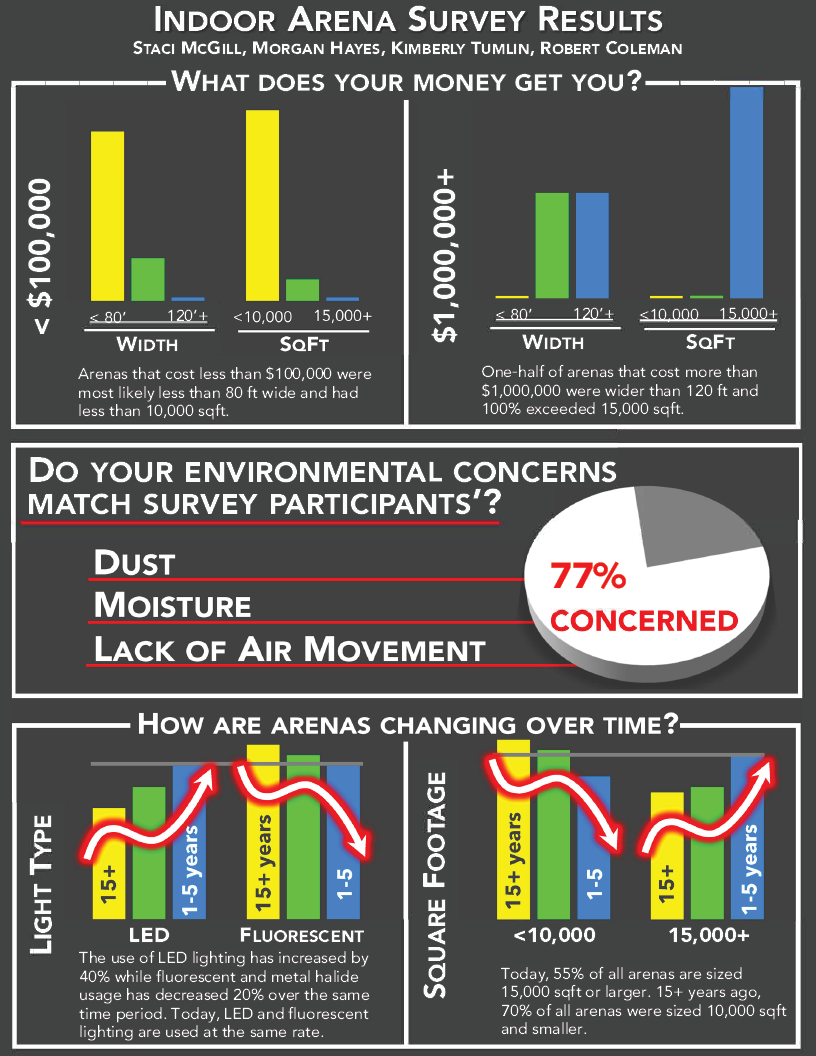UK Indoor Horse Arena Survey Infographic and Follow-up Information
 When University of Kentucky College of Agriculture, Food and Environment graduate student Staci McGill set out to learn more about the air quality of indoor horse arenas almost three years ago, she was surprised to discover there wasn’t any existing research available. So she forged the way with first-of-its-kind research, melding her passion for riding with her academic research interests.
When University of Kentucky College of Agriculture, Food and Environment graduate student Staci McGill set out to learn more about the air quality of indoor horse arenas almost three years ago, she was surprised to discover there wasn’t any existing research available. So she forged the way with first-of-its-kind research, melding her passion for riding with her academic research interests.
In May 2018, she launched a survey about indoor arenas in partnership with UK’s College of Public Health and facility design experts within the College of Agriculture, Food and Environment. The survey set out to gather information on arena design and construction, footing, maintenance and the arena environment. Owners, managers and riders were asked about arena construction characteristics, air quality, arena footing and associated health outcomes in horses and humans.
The online survey indicated that 77% of respondents are concerned about dust, moisture levels, and/or the lack of air movement.
“It’s mind-blowing that this hasn’t been done before,” said McGill, a graduate student in the Department of Biosystems and Agricultural Engineering. “We know these issues exist, but no one has ever documented the concerns.”
McGill’s team released some of the initial findings through an infographic in late 2019, as well as follow-up, hands-on information in response to the study.
The facility design and use information shows trends with arena age and construction costs. An example of changing trends is lighting. The use of LEDs has increased, while the use of metal halide lights has dramatically decreased. LEDs look to be surpassing even fluorescents in newly built arenas. The size of the arenas has shifted to greater square footages in newer arenas and, as expected, larger arenas also tend to be more expensive to build.
The definition of an indoor arena varies by where respondents live and how their climate impacts horse sport participation. Primary riding disciplines, wall and window configuration and footing materials, like the presence of fiber, all varied by region as well.
The major finding is that the arena is a complex environment. Facility design, management, footing, usage and amount of horse activity within the space all interact to affect the environment in an indoor arena.
ID-265: Riding Arena Footing: Materials and Characteristics
ID-266: Riding Arena Maintenance: Dragging and Treatments
ID-267: Riding Arena Maintenance: Equipment Guide
Holly Wiemers, MA, APR, is communications and managing director for UK Ag Equine Programs.
